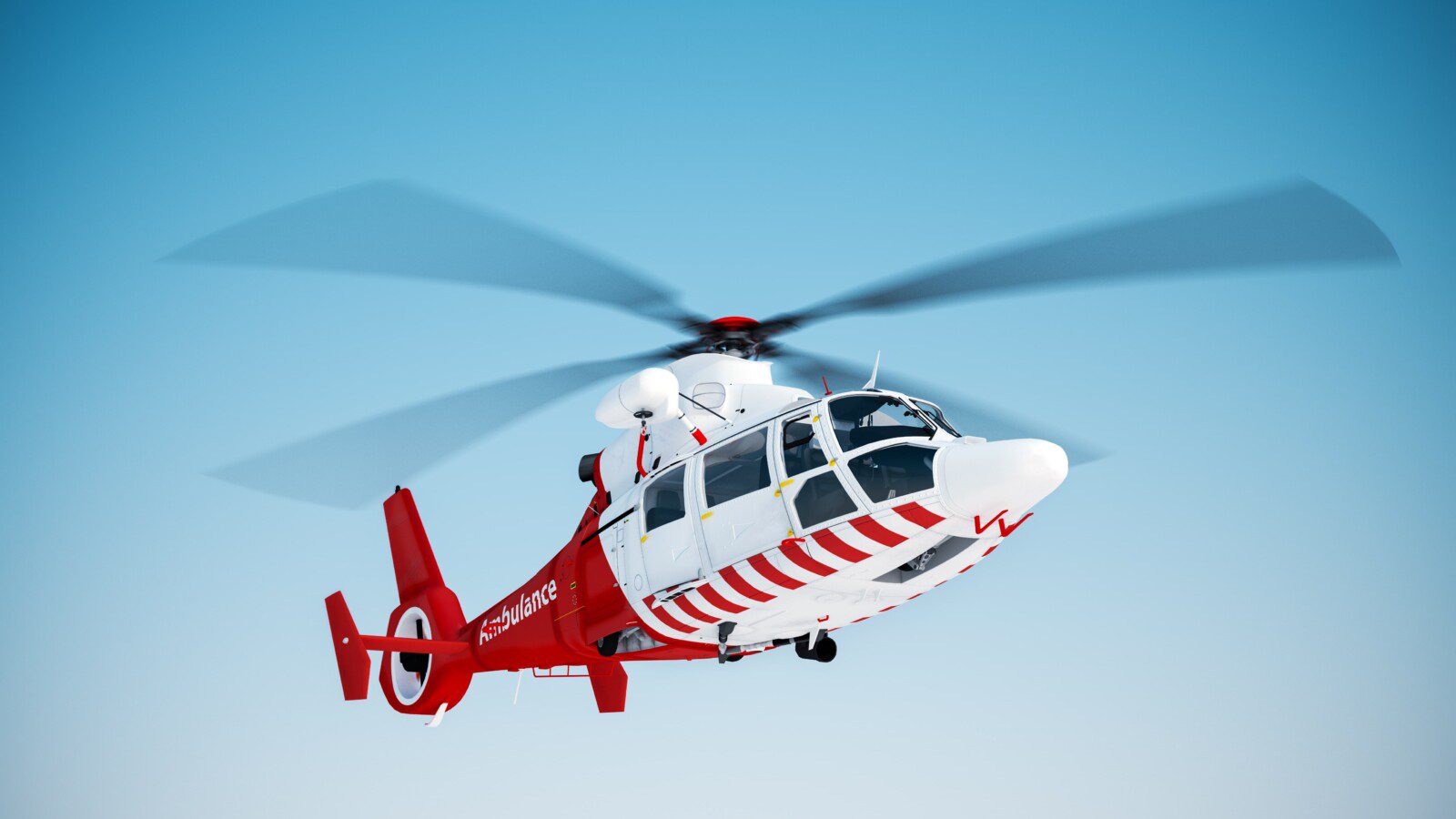Navigating Duty of Care
Imagine this scenario; some of your employees need to travel to a part of the world with a reputation for being unpredictable. Political, environmental and civil unrest is common, but you hope that keeping a low profile means an incident-free trip. Without warning, an unprecedented wildfire erupts and spreads overnight. The local authorities are unable to fully cope with the situation, as the dangers of the wildfires, opportunistic criminals and societal unrest grip the city. With it, basic services like internet access become limited, as attempts are made to establish the safety of those employees and get them out of harm’s way. What is your action plan? Where do you start? How do you make sure your employees return safely? While this is not pleasant to picture, answering questions like these is vital to not only the ethical safeguarding of your people but also the legal Duty of Care required of your organisation.
Without a comprehensive Travel Safety Plan (TSP) or a pre-arranged evacuation strategy, the organisation faces significant risks – not just litigation and reputational damage, but also the safety of its employees. This underscores why Travel Risk Management (TRM) must be central to Duty of Care – it’s about more than meeting legal requirements; it’s about protecting lives, fostering trust, and ensuring resilience in challenging environments.
Today, global travel is essential for business success, which means that when it comes to Duty of Care, Travel Risk Management is more important than ever. For organisations, universities, and NGOs, ensuring the safety and well-being of employees and travellers is not just a legal obligation but a strategic imperative.
This guide delves into the intricacies of Travel Risk Management, focusing on key components such as pre-travel risk assessments, security briefings, evacuation planning, and medical support. Through engaging examples and practical insights, we’ll illustrate why TRM is an indispensable aspect of modern Duty of Care.
What is Duty of Care?
At its core, Duty of Care means taking responsibility for the safety and well-being of those under your care, whether employees, students, or travellers. It’s about anticipating risks, putting safeguards in place, and being ready to act when needed. It’s not just good ethics – it’s a legal obligation that builds trust, boosts credibility, and protects organisations from financial and reputational harm.
The idea of Duty of Care comes from Tort law, specifically the area of negligence. In simple terms, if a person or organisation doesn’t take reasonable steps to keep others safe and someone gets hurt because of it, they can be held legally responsible. Tort law is all about addressing harm caused by someone’s actions (or lack of them) and making things right.
Think of it this way: if you send someone into a risky situation without proper precautions, and they get hurt, you could be held accountable. That’s why companies must go beyond basic safety measures and adopt proactive approaches to identify and manage risks.
Why Does It Matter?
Our world is evolving and more interconnected each day, which means organisations face challenges like geopolitical instability, evolving laws, and higher employee expectations for health and safety. This makes having a strong Duty of Care framework more important than ever. Neglecting it can lead to lawsuits, penalties, and damaged reputations, while doing it right protects people and strengthens operational success.
The Legal Side of Duty of Care
Legally, Duty of Care means acting reasonably to avoid foreseeable harm. Here are the key elements:
- Foreseeability: Could you reasonably predict the risk? If yes, take action.
- Reasonableness: Did you take appropriate precautions in line with industry standards?
- Causation: Was the harm directly caused by your actions (or lack of them)?
- Standard of Care: Are you meeting expected safety levels for your industry and location?
Duty of Care Regulations Around the World
The duty of care definition at its core remains the same across the world, but different legal systems around the world define Duty of Care in unique ways. Here are some examples from around the globe.
- United Kingdom: The Health and Safety at Work Act 1974 outlines clear responsibilities for employers to ensure employee health, safety, and welfare. Employers must provide safe working conditions, adequate training, and protective equipment. In addition, case law in the UK continues to evolve, holding organisations accountable for psychological safety and stress-related illnesses.
- Australia: Under the Work Health and Safety Act 2011, employers are required to eliminate or minimise risks to health and safety as far as reasonably practicable. Australia’s legislation also prioritises mental health and work-life balance as components of an employer’s Duty of Care.
- European Union: The EU Occupational Safety and Health Directives establish a framework for workplace safety, which member states incorporate into their national laws. These directives often influence global standards, particularly for multinational corporations.
- Canada: Canadian law takes a holistic approach to Duty of Care through the Occupational Health and Safety Act (OHSA), which emphasises workplace safety, employee well-being, and the importance of proactive leadership.
Notable Duty Of Care Laws
Duty of Care in the US
In the United States, OSHA is the primary regulatory body overseeing workplace safety. Employers must comply with OSHA standards, which cover areas such as hazard communication, personal protective equipment, and emergency action plans. Employers who fail to meet these requirements face substantial fines and legal action.
Additionally, American tort law allows individuals to pursue negligence claims if they suffer harm due to a breach of Duty of Care. Employers must remain vigilant in their compliance efforts to avoid legal liability. Increasingly, Duty of Care in the workplace is focusing on employee mental health support, particularly as remote work environments present new challenges.
Duty of Care in France
France’s Loi de Vigilance (Duty of Vigilance Law) was introduced in 2017 to hold large corporations accountable for risks within their supply chains. Companies must identify and address human rights violations, environmental risks, and workplace hazards associated with their operations. This law applies to French companies with over 5,000 employees globally.
Duty of Care in Germany
The German Supply Chain Duty of Care Act, enacted in 2023, mandates companies to conduct risk assessments and implement measures to address human rights and environmental issues within their supply chains. This legislation has global implications for businesses operating in Germany.
Duty of Care in The Netherlands
Dutch employment law requires employers to provide safe and healthy work environments. Employers who fail to meet this obligation may face fines, compensation claims, and reputational damage. The Netherlands also prioritises mental health, with a focus on preventing workplace stress and burnout.
Global Compliance Challenges
For organisations operating internationally, ensuring compliance with varying regulations can be challenging. Best practices include:
- Conducting country-specific risk assessments.
- Partnering with local legal experts to understand regional requirements.
- Implementing a global Duty of Care policy that aligns with international standards.
In the era of globalisation, companies must integrate local legal standards with global policies to remain compliant while fostering trust among employees.
Strengthening Duty of Care Through Travel Risk Management
Developing strong Travel Risk Management (TRM) policies isn’t just a checkbox exercise – it’s the foundation of keeping your travellers safe, confident, and prepared, no matter where they go. A well-crafted TRM policy blends actionable strategies with tailored solutions, addressing everything from pre-trip planning to emergency responses.

Pre-Travel Risk Assessments
Before a trip even begins, understanding potential risks is essential. This involves gathering data on Country Risk Factors like political instability, health concerns, or natural hazards in the destination country. Securewest’s Sphere platform, powered by cutting-edge technology, takes this a step further by offering bespoke risk assessments that include detailed insights tailored to both the location and individual traveller characteristics. For example, a foreign national heading to a volatile region might face heightened risks compared to a local traveller, influencing decisions about travel approval and safety measures.
Crafting Travel Safety Plans
A well-structured Travel Safety Plan (TSP) can be a traveller’s lifeline. It outlines the essentials: detailed itineraries synced with PNR (Passenger Name Record) data, emergency protocols with primary and secondary evacuation routes, and advice tailored to the traveller’s role and destination. Response Protocols are non-negotiable, in case of missed check-ins or difficulty contacting travellers, to ensure their safety. Sphere provides fully customisable TSPs, giving organisations a clear roadmap for each trip while ensuring travellers are equipped with the knowledge and tools they need to stay safe.
Security Briefings
No one should step into an unfamiliar environment unprepared. Security briefings are a critical part of the TRM process, covering local laws, cultural norms, and situational awareness techniques to help travellers recognise and avoid threats. It’s important to ensure that these briefings are not only thorough but also continuously updated with real-time insights, keeping your team informed at every stage of their journey.
Managing High-Risk Destinations
Travelling to high-risk areas requires an extra layer of planning. Securewest’s expertise ensures that travellers are supported with evacuation plans, access to secure vehicles, and on-ground personnel like close protection officers and trained drivers. A recent example of this is Securewest’s support during the Israel-Gaza conflict, where comprehensive evacuation strategies ensured the safety of corporate teams in Aqaba, Jordan.
For travellers in volatile regions, having access to real-time risk intelligence is invaluable. Travellers should be offered tailored advice but also given updates based on country-specific risks, such as natural disasters or political unrest. Travellers heading to hurricane-prone regions, for instance, receive emergency response training and recommendations for secure lodging.
Leveraging Technology for Safety
Modern TRM relies heavily on technology, and Sphere excels in integrating these solutions seamlessly. Real-time alerts provide instant updates on security threats, health risks, and environmental hazards, ensuring employees can adapt their plans and avoid danger. For example, during sudden political unrest or a natural disaster, real-time updates can highlight affected areas, evacuation routes, and safe zones, helping travellers make informed decisions quickly.

Sphere’s geo-location tracking ensures that even in remote areas with limited connectivity, travellers’ locations can be monitored, and assistance provided when necessary. GPS-enabled tools allow organisations to act swiftly during emergencies such as natural disasters, ensuring that every team member is accounted for and supported. Sphere’s SOS functionality further enhances safety by enabling travellers to send immediate alerts during emergencies, connecting them directly with response teams for swift action.
Technology platforms like Sphere also offer integrated incident reporting dashboards, enabling organisations to document safety incidents, analyse trends, and continuously improve risk mitigation strategies. These tools provide valuable insights for addressing systemic issues proactively, ensuring a safer travel experience for everyone involved.
Supporting Expatriates and ISEs
For expatriates and International Service Employees (ISEs), safety goes beyond the occasional trip – it’s about creating a secure environment for long-term assignments. In conjunction with tools like Sphere, travellers must have access to comprehensive regional healthcare, secure housing options, and culturally sensitive risk assessments. Additional support includes mental health resources to help expats and their families adjust to new environments, ensuring they feel confident and cared for.
Preparing Travellers Through Training
The best policies won’t work if travellers don’t know how to use them. Training empowers employees with the knowledge they need to navigate risks effectively. Programmes cover everything from emergency protocols to situational awareness and health precautions, such as avoiding contaminated water or recognising symptoms of local diseases. Scenario-based workshops and engaging digital modules ensure that this training feels practical and relevant, leaving travellers well-prepared for any challenge.
Medical Services as Part of TRM
While security often takes centre stage, medical support is equally critical. Securewest offers robust medical services that prioritise traveller well-being. This includes 24/7 medical assistance, pre-travel health screenings, and emergency medical evacuations. For instance, during a recent medical crisis, we helped coordinate the seamless evacuation of a traveller, managing everything from local hospital care to air ambulance transport, ensuring a safe return home.
Sphere’s integrated SOS feature also streamlines medical emergencies, routing alerts directly to our dedicated response teams. This ensures that travellers receive immediate support, whether it’s arranging a telemedicine consultation, sourcing essential medications in remote areas, or handling complex repatriation cases.

Why TRM Matters
Neglecting Travel Risk Management can lead to severe consequences, from legal liability to reputational damage – not to mention the human cost of leaving travellers vulnerable. On the other hand, investing in a comprehensive TRM framework ensures your team is not only protected but also empowered to focus on their goals with confidence. It’s not just about meeting obligations – it’s about doing the right thing for your people and your organisation. With TRM, every journey can be a safe one.
Real-Life Scenarios: The Impact of Effective TRM
- Health Crisis Abroad: A team member contracts a severe illness during a business trip. Thanks to pre-travel health screenings and real-time alerts, the organisation swiftly arranges medical evacuation, preventing a potentially life-threatening situation.
- Political Unrest: A sudden coup in a foreign country strands employees at their hotel. With a well-executed TSP and on-ground security personnel, the organisation orchestrates a safe evacuation, avoiding harm and reputational damage.
- Natural Disaster: An earthquake disrupts transportation networks, leaving travellers without safe passage. Satellite-enabled tracking and secure communication channels guide them to safety.
- Evacuation in Peru: During escalating crime in La Libertad, Securewest coordinated the safe evacuation of NGO workers, highlighting the importance of proactive risk management and local partnerships.
- Libya Research Trip: Securewest supported a PhD student’s research trip to Tripoli, providing daily check-ins, tailored risk assessments, and timely alerts, ensuring both safety and academic success.
Who Needs Travel Risk Management?
Travel Risk Management is vital for keeping people safe and organisations running smoothly, whether you’re an NGO, a global business, or a university. With the right strategies in place, you can minimise risks and give your team the confidence to focus on what matters.
TRM for NGOs
NGOs often work in risky environments, so preparation is everything. Pre-deployment training helps staff learn how to stay safe, handle emergencies, and navigate local customs. For example, a team heading to a conflict zone might be trained on using evacuation routes or dealing with checkpoints.
Crisis plans are equally important. Whether it’s floods, medical issues, or security threats, having clear steps in place like relocation procedures or supply plans keeps people protected. Regular practice drills build confidence, and mental health support, like counselling or debriefing sessions, ensures your team stays resilient.
TRM for Businesses
For businesses, protecting employees on the move is a must. Travel safety policies should include pre-trip briefings, emergency evacuation plans, and tools like GPS tracking to keep tabs on travellers. Picture a consulting firm sending staff to a politically unstable region. Having 24/7 security support and even close protection officers shows you’re serious about their safety. These measures also build trust and loyalty within your team.
TRM for Universities
Universities need to protect students and staff, especially during field trips or study-abroad programmes. A solid Travel Risk Management plan includes detailed itineraries, emergency contacts, and destination-specific training. For instance, archaeology students heading overseas might learn how to avoid local risks and handle emergencies. These efforts help create a secure environment where academic goals can be pursued with peace of mind.
The Future of Travel Risk Management
The future of Travel Risk Management (TRM) is all about adapting to a fast-changing world. Organisations are now tapping into technologies like AI to predict risks before they happen, making smarter, faster decisions. Remote monitoring tools are also becoming more advanced, giving real-time updates and support to travellers, even in the most remote or high-risk areas. These innovations are changing the game when it comes to keeping people safe on the move.
But it’s not just about technology. There’s also a growing focus on sustainability and ethical travel, as organisations align their TRM strategies with global values. By prioritising these elements alongside safety, businesses not only meet their Duty of Care but also build trust and resilience. It’s a win-win that protects people while strengthening reputations for the long haul.
Travel Risk Management is no longer optional. In an unpredictable world, organisations must adopt comprehensive TRM frameworks to protect their people and operations. From pre-travel risk assessments to 24/7 medical support, effective TRM saves lives, mitigates risks, and strengthens organisational credibility.
With tools like Sphere’s integrated solutions and Securewest’s expertise, organisations can confidently meet their Duty of Care obligations, ensuring every journey is safe and secure. For tailored TRM solutions, partnering with industry experts ensures your travellers’ safety and your organisation’s peace of mind. Because when it comes to Duty of Care, every journey matters.
